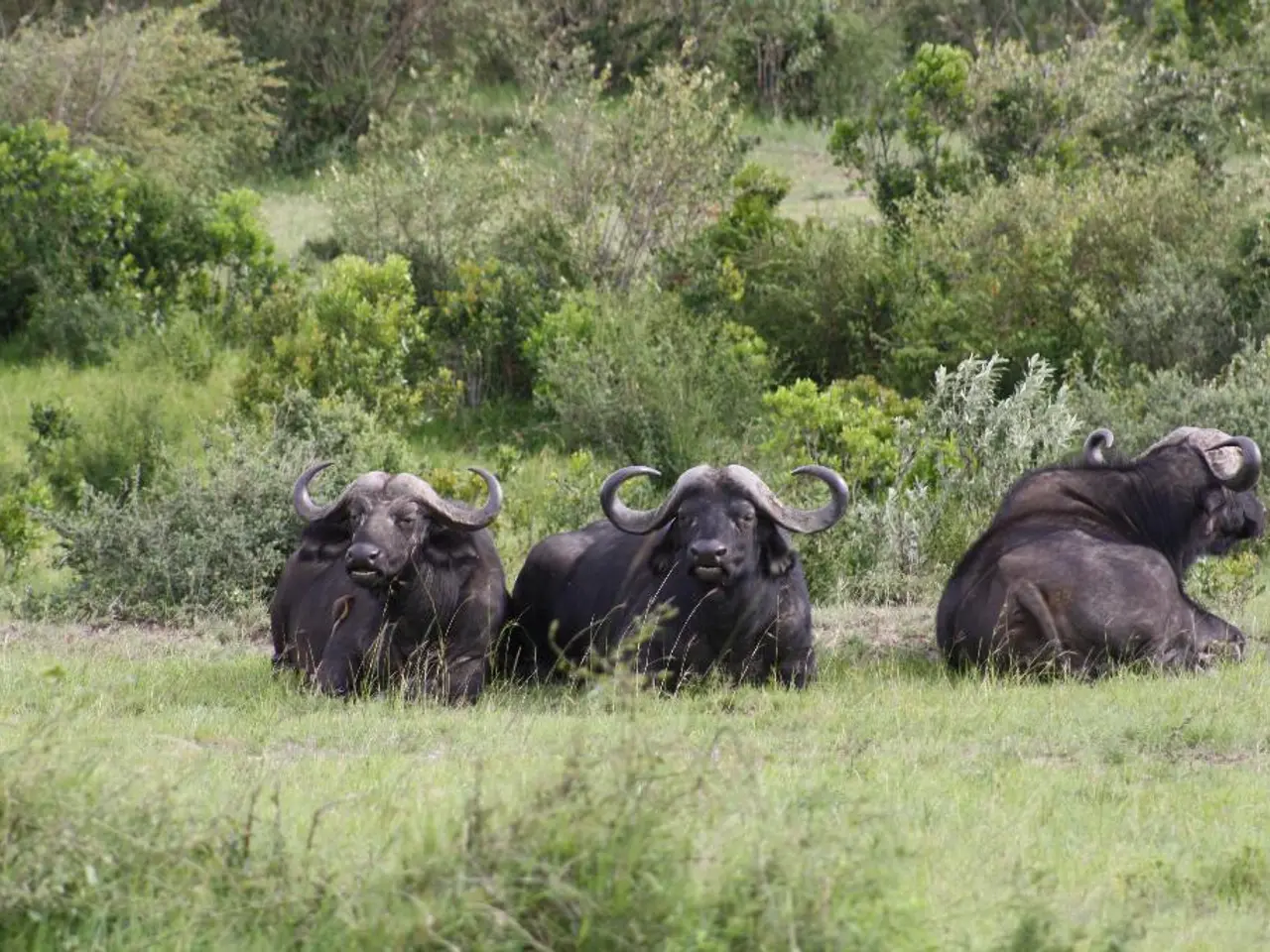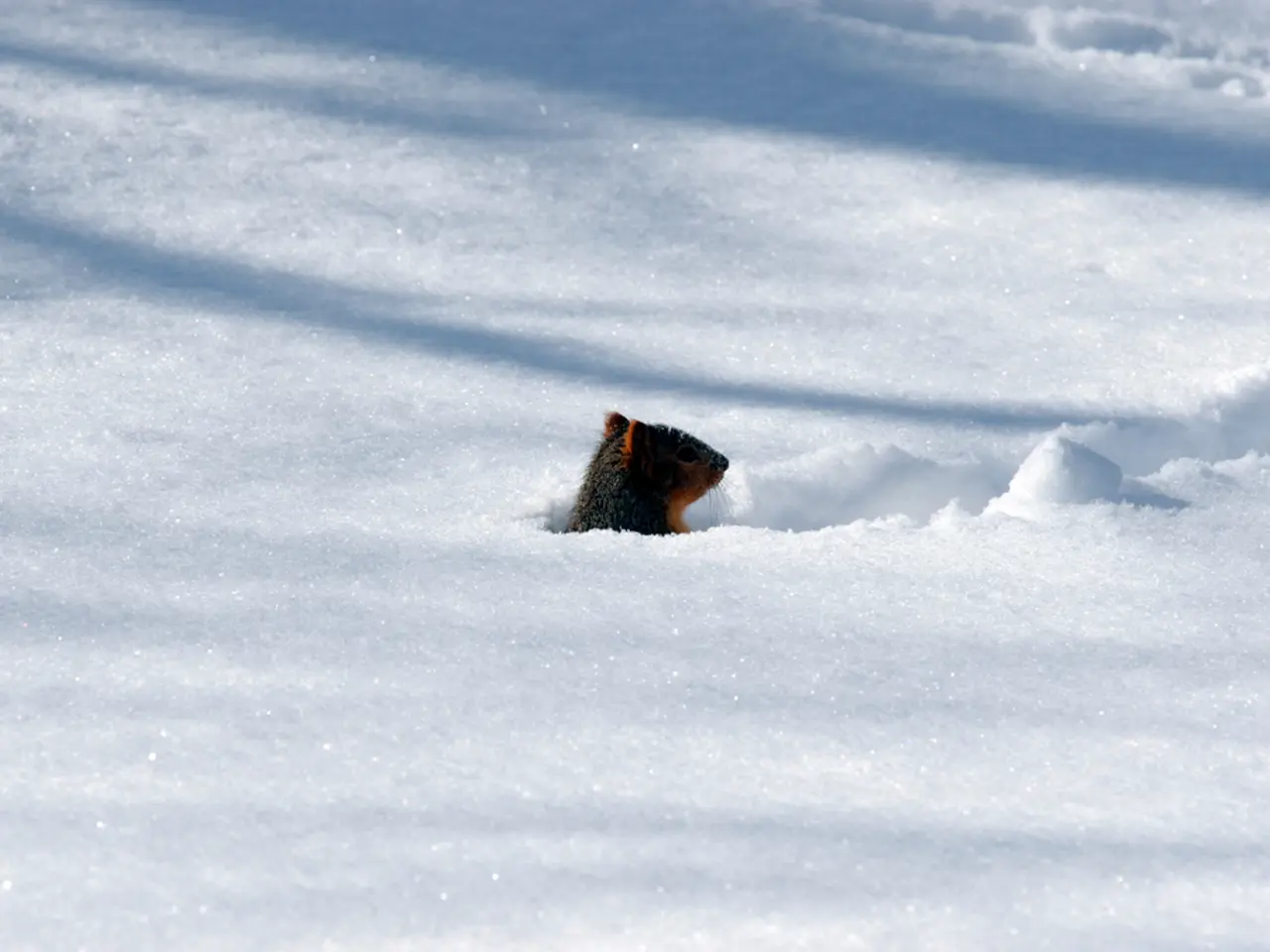Key Achievements: Restoring Balance to Ecosystems Through Strategic Species Reintroduction
In various parts of the world, the restoration of keystone species, such as the Eurasian beaver, blue wildebeest, grey wolf, water buffalo, plains bison, and Arctic muskoxen, is proving to be a significant step towards addressing climate change.
Eurasian Beaver
The reintroduction of Eurasian beavers in the UK has brought about a remarkable transformation. Their dams, by slowing water flow up to 60%, create wetlands that support diverse plant growth, and increase carbon sequestration by forming effective carbon sinks in these wetlands. The wetlands capture carbon and buffer ecosystems from extreme weather, directly aiding climate stabilization.
Large Ungulates
While not all individual large ungulate species significantly improve soil carbon storage, their collective rewilding contributes to organic carbon storage in soils. Grazing and movement patterns of these herbivores promote diverse plant communities, stimulate soil carbon inputs, and can prevent woody plant encroachment, maintaining grassland carbon sinks.
Grey Wolf
The reintroduction of predators like wolves indirectly supports climate goals by regulating prey populations, allowing for vegetation regeneration and healthier soil systems that enhance carbon sequestration. This top-down regulation helps maintain intact ecosystems that are more resilient to climate change.
Impacts on Specific Regions
- Serengeti: The successful restoration of the blue wildebeest population has brought the Serengeti back into balance, making it a natural storage unit for carbon once again.
- Yellowstone National Park: The elimination of the last wolf pack in 1926 led to an imbalance in the ecosystem, resulting in overgrazing and a decline in songbirds. The reintroduction of wolves in 1995 has helped correct this imbalance.
- Arctic: The conservation of muskoxen is being considered in Arctic climate models due to climate change, as they play a crucial role in the ecosystem.
Other Keystone Species
- Water Buffaloes: These creatures are essential seed dispersers, planting over 200 species of vegetation. They also create pools and puddles, providing homes for various insects, amphibians, and fish.
- Plains Bison: The reintroduction of plains bison has had a significant impact on the American prairie's ecosystem.
- Historically, between 25 and 60 million plains bison once roamed the American prairies, but they were nearly driven to extinction in the 19th century. A coalition of biologists and conservationists have been working to recover their population.
- In May 2021, 18 water buffaloes were reintroduced onto Ermakov Island on the Danube, leading to a thriving ecosystem.
- Since 2021, Eurasian beavers have been reintroduced in several locations throughout the UK.
Overall, rewilding keystone species enhances ecosystem integrity. These restored ecosystems improve biodiversity, water cycles, and soil carbon storage, making keystone species rewilding an essential nature-based solution for climate change mitigation.
[1] Beaver dams and climate change: the role of beaver dams in carbon sequestration and climate mitigation [2] Large herbivores and soil carbon: a review of the evidence [3] Beaver reintroduction: a nature-based solution for climate change mitigation [5] Wolves and climate change: the role of top-predators in ecosystem carbon dynamics
- The science behind rewilding keystone species, such as beavers, large ungulates, and wolves, plays a pivotal role in health-and-wellness and environmental-science, particularly in terms of climate-change mitigation, as they contribute to ecosystem restoration through activities like carbon sequestration.
- Ecosystem restoration projects, including nature conservation efforts for keystone species like water buffaloes and plains bison, promote soil improvement, plant diversity, and fitness-and-exercise opportunities, as these animals serve as important factors in maintaining a healthy and vibrant ecosystem.
- The correlation between keystone species restoration and climate-change impacts can be further explored through studies in environmental-science, such as the role of beaver dams in carbon sequestration, the impact of large herbivores on soil carbon storage, and the significance of top-predators like wolves in ecosystem carbon dynamics.




